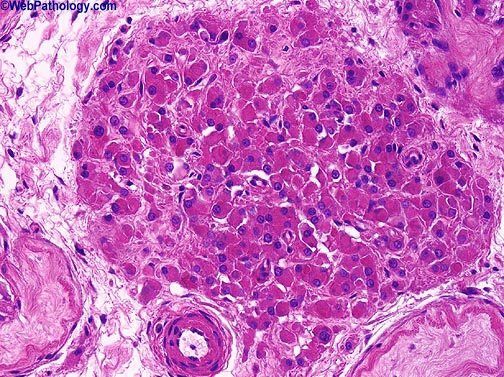Swyer syndrome
: A person is born without functional gonads and known as XY gonadal
dysgenesis.
:is a
condition in which individuals with one X chromosome and one Y chromosome in
each cell, the pattern normally found in males, have a female appearance.
People with
this disorder have female external genitalia and a normal uterus and Fallopian
tubes. However, they do not have functional gonads (ovaries or testes).
Their gonads
are minimally developed clumps of tissue present instead testes or ovaries.
This kind of gonad in swyer
syndrome are known as gonadal
streaks. These abnormal gonads often become cancerous, so they are usually
removed surgically early in life.
Causes:
1) Mutations in the SRY gene
(15 % to 20 %): prevent production of the sex-determining region Y protein or
result in the production of a nonfunctioning protein. This fetus will develop
as a female despite having a Y chromosome.
2) Mutations in the NR5A1 and DHH genes (small number): The NR5A1 gene produce transcription factor steroidogenic
factor 1 that help to produce sex hormones and development of male sexual
characteristics. The DHH gene
produce a member of the hedgehog protein family. Hedgehog proteins are
important for early development in many parts of the body. Mutations in the NR5A1 and DHH genes
impair the process of male sexual differentiation, causing to develop a female
appearance despite having a Y chromosome.
3) Changing in the NR0B1
gene (small number): The NR0B1 gene
provides a DAX1 protein that have important role in the development and function
of gonads. A duplication
of a region in the X chromosome can result in an extra copy of the NR0B1 gene, which leads to the production
of extra DAX1 protein. Before birth, an excess of DAX1 protein prevents
the formation of male reproductive tissues, including the testes and male
external genitalia.
These people are
typically raised as females and have a female gender identity.
Treatment: hormone replacement
therapy during adolescence to induce menstruation and development of female
secondary sex characteristics such as breast enlargement and body hair.
http://www.webmd.com/a-to-z-guides/swyer-syndrome
http://www.rarediseases.org/rare-disease-information/rare-diseases/byID/1204/viewAbstract
